The Vietnam War, This Week, The Public Opinion, Chambersburg PA
Vietnam War Weekly Front Pages
3 July 1966 – 9 July 1966
The Public Opinion, Chambersburg PA
World-wide protests on Independence Day.
*****
US Navy fighter-bombers attacked two North Vietnamese torpedo boats off Haiphong early in the week as the air war against the Communist north continued without letup. Navy and Air Force planes flew a record 91 multi-plane missions against North Vietnam on Monday. The Fourth of July targets included an oil storage area 19 miles southeast of Haiphong. An estimated 250 to 300 planes made the raids, which a qualified officer said was above the average for the 16-month-old air war against the north. It was not a record number for a single day’s raid, however. On Wednesday American war planes dodged a heavy onslaught of Soviet-made missiles over North Vietnam’s Red River Valley during one of the heaviest raiding days of the war. The US military command announced at a briefing that 27 to 29 surface-to-air missiles had been fired at US planes, but a spokesman said it probably would be at least 12 hours before intelligence reports could be sorted out and a definite figure established. Air Force and carrier-based Navy jets had just flown a total of 106 multi-plane missions, a new high in the 16-month air war.
Meanwhile, US B-52 bombers hammered at two targets on Wednesday: a Viet Cong base camp and training center near Cambodia 60 miles northwest of Saigon, and a Viet Cong troop concentration 38 miles southwest of Tuy Hoa, on the central coast. On Thursday US fighter-bombers blasted oil, rail, and missile sites in North Vietnam, dodging Communist MIGs and missiles and knocking out four torpedo boats. In a day of furious air action two American planes were shot down. The pilot of one was rescued, but the other was missing.
In a major ground action reported on Wednesday, a government regiment of about 3,000 men clashed four times with Communist forces 62 miles southwest of Saigon. The spokesman said the Vietnamese troops killed 83 Viet Cong and captured two 57 mm recoilless rifles, four machine guns, and 27 other weapons. Government casualties were light. Later in the week a US armored column lured a heavy Viet Cong force into the fire of waiting artillery, alerted warplanes, and battalions of helicopter-borne 1st Infantry Division troops north of Saigon. It was the second execution of such a reverse ambush tactic in ten days. Contact was broken just before dark. Field reports said it was believed the enemy – a force of at least regimental size estimated at more than 2,000 men – was withdrawing to the northwest. That would be in the direction of the Cambodian frontier. A spokesman at a forward command post reported American units were setting up a blocking force behind the Viet Cong to cut off their escape routes. There was no immediate report of casualties on either side.
“Americans get out of Vietnam” was the familiar rallying cry as chanting crowds, many of them communist-organized, staged Fourth of July protest demonstrations around the world. US Secretary of State Dean Rusk was the target of about 5,000 screaming Japanese leftists as he arrived in Japan for an economic conference. Police slipped him out of Osaka airport by a back road. In Paris, about 25 Americans began a march on the US Embassy to deliver a protest petition, and French Communists moved in and swept the group into a fist-swinging clash with police. The crowd of 700 applauded when an American girl held aloft a burning American flag “as a symbol for what’s happening in Vietnam – for the Americans to get out.” British police stopped an attempt to burn the American flag at the US Embassy in London where the US ambassador was holding an Independence Day reception. Two supporters of the British pacifist “Committee of 100” crashed the party but were hustled out when one of them proposed a toast “to the dead and dying in Hanoi and Haiphong and the American withdrawal from Vietnam.”
British Prime Minister Harold Wilson cast himself in the role of Vietnam peacemaker by arranging a surprise visit to Moscow prior to a conference with President Johnson in Washington later in July. The Soviet Union had already rejected Britain’s peace formula – reconvening the 1954 Geneva conference – but the Prime Minister was hopeful to open up a new line of communication on Vietnam between the Kremlin and the White House. While Wilson ran against heavy odds in his pursuit of peace, a flurry of pronouncements by high US officials left contradictory impressions on the prospects for peace talks.
Hanoi’s latest parading of captured US fliers had underlined again for Washington policymakers one of the most sensitive issues thus far of the Vietnam war – the treatment of American prisoners. A State Department count showed that 34 US servicemen were in Red hands and 233 were missing. The outlook was of course for bigger figures as the fighting continued. The problem was sensitive for US strategists because it directly involved American lives – and because they had found no sure way of safeguarding the prisoners’ welfare. But even with this drawback, US officials cautiously acknowledged that American GIs in North Vietnam did not appear to be getting the worst possible treatment from their captors. Several reports filtering out indicated that the Americans were faring about the same as other prisoners in North Vietnam – not good food and medical attention by US measurement, but about on a par with that accorded Asians. North Vietnam was a signatory to the 1949 Geneva convention providing for humane treatment of prisoners of war, but Hanoi said the captured Americans were war criminals, not subject to the Geneva rules. Although Hanoi had hinted at war crimes trials for US prisoners, it had not yet conducted any. Nor was it known to have executed any Americans.
(Photo courtesy newspapers.com, Chambersburg Public Opinion)

